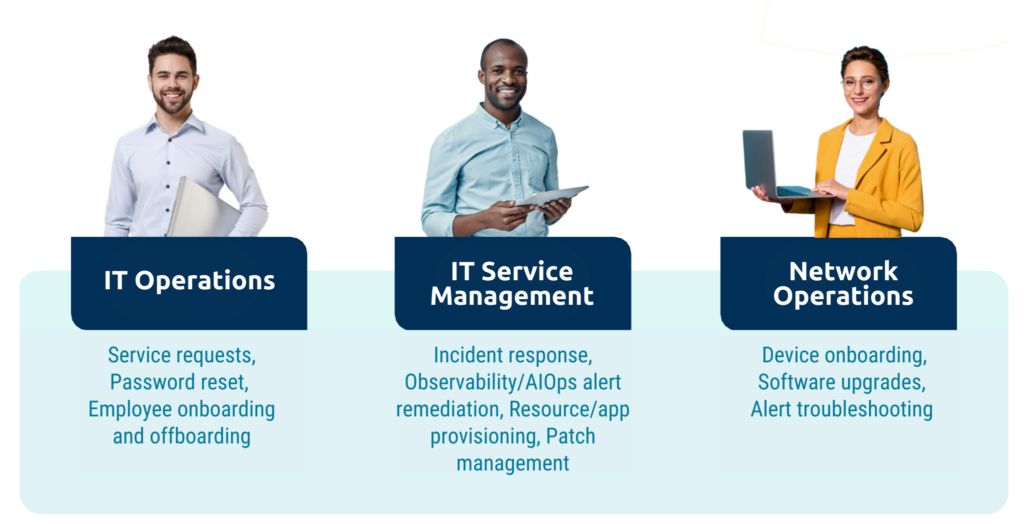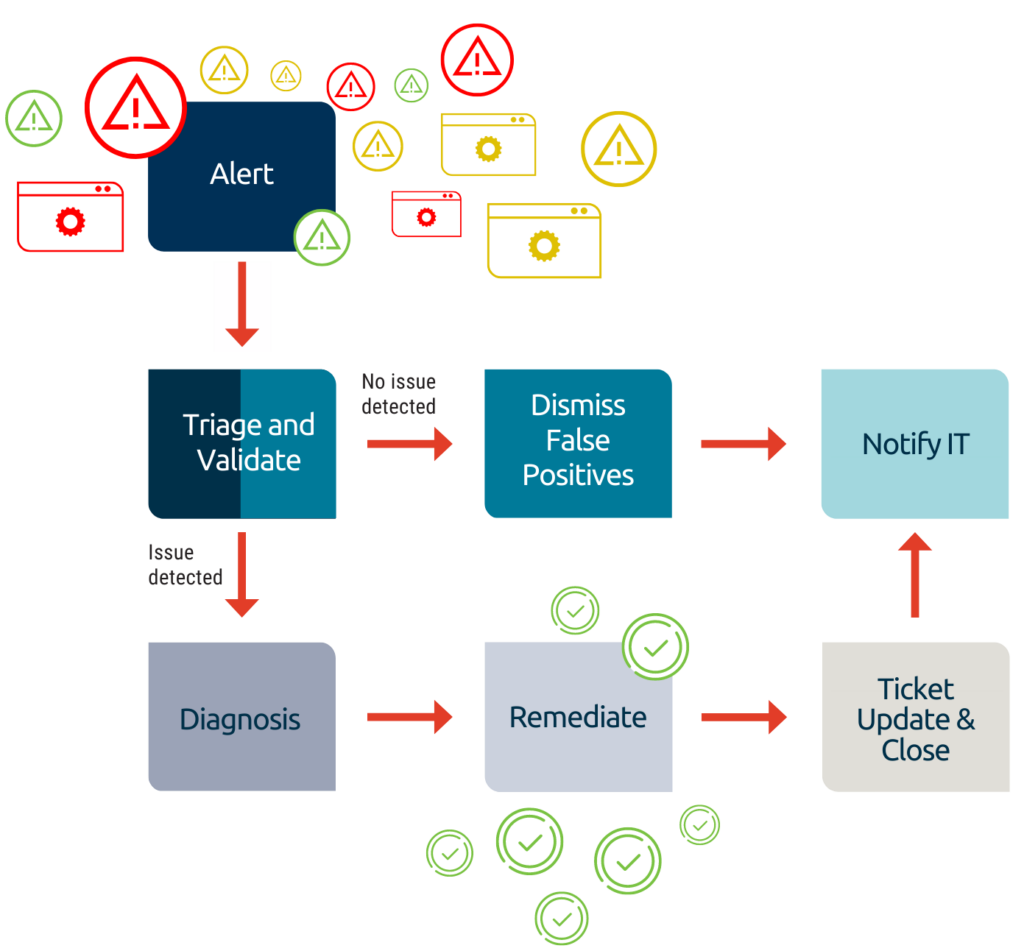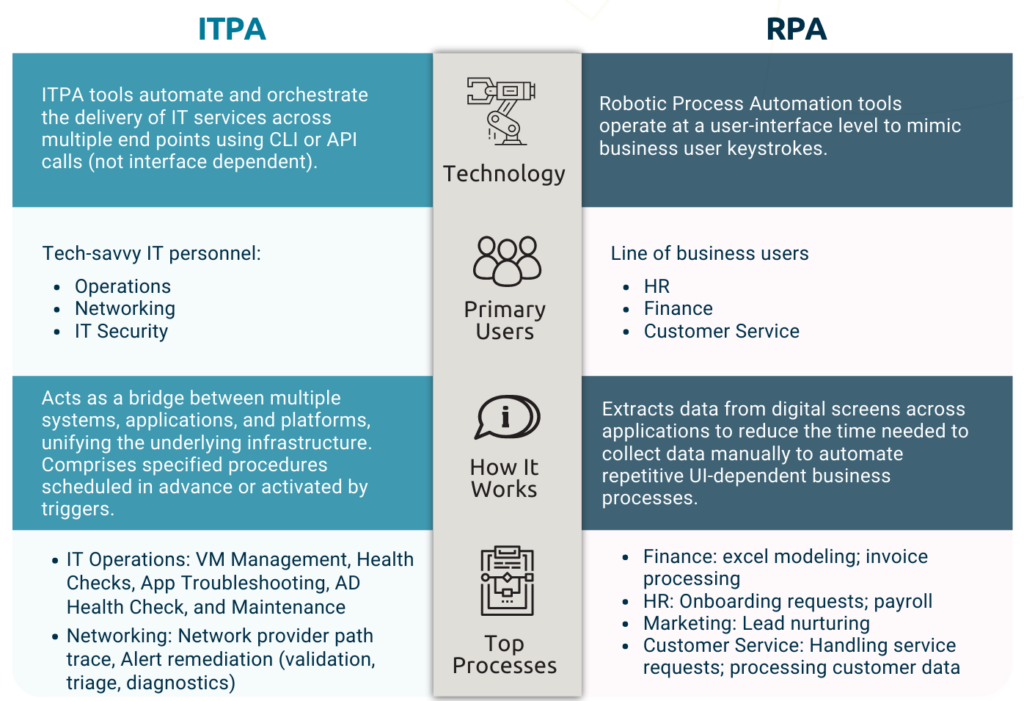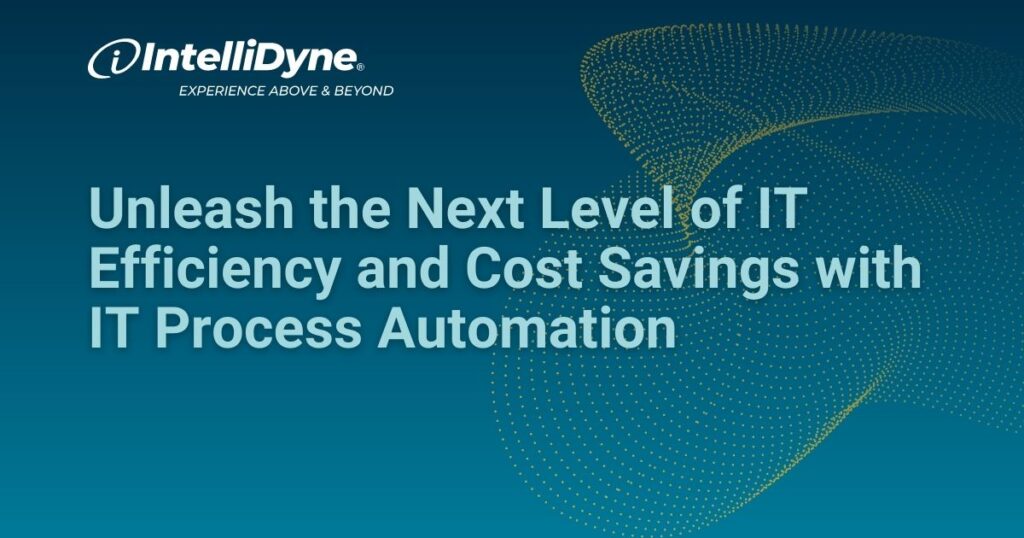Government IT operations involve various tools, applications, and security constraints, making the underlying processes complex. Additionally, these processes may involve a combination of hardware, network switches, virtual infrastructure, and cloud services. While many Federal agencies are already using Robotic Process Automation (RPA) to connect systems, process requests, and perform a multitude of repetitive, rules-based tasks, IT Process Automation (ITPA) takes RPA to an operational level, building upon the basic capabilities of RPA and leveraging advanced technologies to streamline workflows by combining tools, people, and processes. With ITPA software, just about any task or business workflow that was once done manually can now be automated.
A great example of ITPA in action is the process to onboard a new employee. On the surface, new employee onboarding seems like an HR job; however, the process usually starts with an IT ticket in an IT Systems Management (ITSM) tool and can cut across multiple IT teams for completion. The processes often require very specific and specialized skills, making it complicated for a single person to orchestrate across all the various systems.
Most organizations are at a maturity level where they have defined standard workflows or steps for each process. For example, they track the new employee’s onboarding via an ITSM tool and kick off the effort with a support ticket, which is assigned to a subject matter expert (SME). The ticket is updated as it progresses through the various stages of the process until the final step is completed.
Below are some examples of processes that IT teams deal with daily:

Scripts and task automations already exist, so what’s the advantage of IT Process Automation?
While it’s common for government IT teams to automate basic tasks with scripts, process efficiency and cost savings aren’t achieved by automating a single or a few tasks. The key is to ensure automatic hand-offs occur when necessary, which establishes a single system of record that links individual actions and administrative tasks, triggered by an alert or ticket update.
Improving operational velocity must start at the process level. In order to capitalize on the full potential of automation, consider a transformative approach that eliminates delays, streamlines hand-offs, and delivers service excellence, overseen by an overarching playbook, versus the implementation of a few scripts or automations. This strategic approach can lead to significant process improvements and cost savings.
“ITPA solutions coordinate the execution of work, sequence the timing of subordinate workflows and scripts and orchestrate the delivery of multiple tasks and services across different IT groups and models.”
Gartner
Below is an example of an ITPA workflow. Are basic scripts and task automation tools able to perform this end-to-end process?

Can IT Process Automation co-exist with Robotic Process Automation?
In order to fully transform every business function, government organizations must be willing to modernize. It’s important to keep in mind that a process can only be as fast as its slowest task. Therefore, leaders need to view automation as a strategy. By enabling every business function with a way to design and implement automation, it’s possible to utilize ITPA and RPA together to provide broad coverage of different types of tasks.
Both ITPA and RPA automations move data in or out of third-party applications. Where they differ is in nuances of scope, where they work best, and which technologies they tie together. ITPA and RPA complement each other—they both enable operational efficiencies applied to complementary processes; however they automate different aspects of processes and take different approaches. See a few examples below:

For more information about ITPA, RPA, and Automation in the government, read our blog, AI at Work: The Building Blocks of Automation.
About IntelliDyne
For over 20 years, government organizations have relied on IntelliDyne for information technology consulting services and solutions in Defense, Health IT, Intelligence, and Federal Civilian as an innovative and trusted partner on matters of national, state, and local importance.

